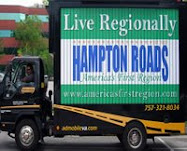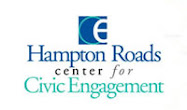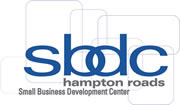 by Lee Beach, Executive Director of the Hampton Roads Research Partnership and a member of the Hampton Roads Technology Council. He can be reached by e-mail at LBeach@HamptonRoadsRP.org. Originally published in Inside Business on 5/18/09 and reprinted here by permission of the author.
by Lee Beach, Executive Director of the Hampton Roads Research Partnership and a member of the Hampton Roads Technology Council. He can be reached by e-mail at LBeach@HamptonRoadsRP.org. Originally published in Inside Business on 5/18/09 and reprinted here by permission of the author.Some believe the national economy has entered a period of sustained decline. Others may worry that, in a severe recession, the country will lose its preeminence in matters scientific and technological as investors and investment turns elsewhere. From where I sit, neither appears to be true, particularly in the case of Hampton Roads.
Partly that has to do with the region’s considerable support from the federal government. But I believe the main reason is “homegrown.” One only has to look at the substantial progress being made locally to see that technology-based economic development is thriving and accelerating. That progress can be attributed to a growing number of partnerships that are concentrating on real products for the marketplace.
That’s where the Hampton Roads Research Partnership comes in. We’re in our ninth year and are currently a consortium of seven colleges and universities, two federal laboratories and a research institute: Christopher Newport University; College of William and Mary; Eastern Virginia Medical School; Hampton University; Norfolk State University; Old Dominion University; Virginia Wesleyan College; Thomas Jefferson National Accelerator Facility, or JLab; NASA Langley Research Center and National Institute of Aerospace.
Applied-technology-wise, these are a group of heavy-hitters. Our members receive many millions of dollars to support research and technology efforts, and for good reason. No one should think the recipients are conducting ivory-tower exercises, suitable only for the rarified air of the cloistered laboratory. Our institutions are pursuing useful projects that are having or will have substantial impact on our daily lives.
This application of laboratory know-how creates real-world jobs, bringing in much-needed revenue, giving birth to companies which, as they mature, create even more opportunities as well as their own spinoffs. That translates locally into what we are calling “technology clusters.” We at the research partnership think, and are betting on, the viability of Hampton Roads clusters to create not just a small-scale nexus of prosperity, but a model for the regional economy. Our premise in creating clusters in 2004 was to gain the power to compete on an equal footing with other areas in the country by leveraging existing strengths in judiciously selected disciplines. The three technology clusters that we chose – bioscience, modeling and simulation, and sensors – have a critical mass of expertise and proven economic viability in Hampton Roads, and so made sense from every point of view that we considered.
Here, I should mention the critical financial support we’ve received from the U.S. Department of Commerce’s Economic Development Administration, under the terms of awards to Norfolk State University and the Hampton Roads Partnership. Without the EDA grants we simply couldn’t have accomplished what we have; simply put, the EDA has made HRRP clusters a reality.
The cluster model has as its fundamental premise that proactively facilitating relationships between technology generators like universities and federal labs and technology users like industry will ultimately produce prosperity for all. Traditionally in Hampton Roads, many of our companies do not have relationships with the regional universities, do not know how to partner and work closely with them, and, particularly, if intellectual property is involved, are wary of potential problems likely to arise.
A key cluster goal is to help companies in each technology area make good decisions in finding the best university/lab expertise or partners for their particular needs (and vice versa). This is a time-consuming process that often involves facilitation of initial and then subsequent contacts between interested parties, and involves multiple industry and university personnel. It’s taken a while, but we’re already starting to generate results.
In April of last year, for instance, we organized a business-academia roundtable that took place during the fifth annual research exposition at Old Dominion. Roundtable talks centered on how successful firms are bridging the gap between potentially profitable ideas and their viability as a commercial application or product.
This year, in mid-February, we co-sponsored a half-day symposium in Suffolk at the Virginia Modeling Analysis and Simulation Center that featured some of the extraordinarily advanced research in biosensors under way in Hampton Roads. Panelists reviewed biosensor projects that are in the development stage and that are creating opportunity for collaboration with locally based academia and industry, and several collaborative projects are in the works as a result of the event. A perspective on the potential for bioscience can be found at http://www.HamptonRoadsRP.org/Bioscience Survey Final Report.pdf.
The bottom line: Our clusters are thriving, gaining traction and membership. We continue to develop activities to help them mature and flourish.
But don’t take my word for it. Visit our website http://www.HamptonRoadsRP.org and see for yourself. One innovation at a time, our economic development future is indeed taking shape.
































No comments:
Post a Comment